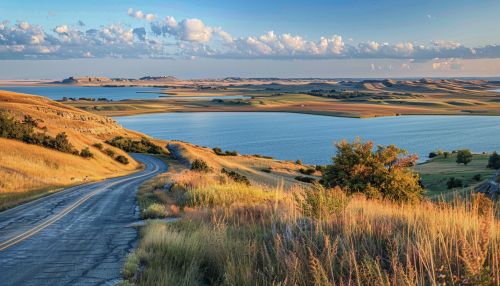Midwestern United States
Geography
The Midwestern United States, also referred to as the American Midwest or simply the Midwest, is one of four census regions of the United States Census Bureau. It occupies the northern central part of the United States. It was officially named the North Central Region by the Census Bureau until 1984.


The region consists of 12 states in the north central United States: Illinois, Indiana, Iowa, Kansas, Michigan, Minnesota, Missouri, Nebraska, North Dakota, South Dakota, Ohio, and Wisconsin. Some regions of the Midwest are known for their natural features, such as the Great Lakes, while others are noted for their rich farmland and prairies.
History
The history of the Midwestern United States has its roots in the exploration and trade in the area by French explorers and traders in the 17th century, and the subsequent colonization by British settlers in the 18th century. The Midwest has been influenced by waves of immigration from Europe, the development of transport routes, and the growth of cities.
Economy
The economy of the Midwestern United States is diverse and reflects the geographical diversity of the region. The Midwest is known for its reliance on agriculture, particularly in the more rural, northern parts of the region. However, the Midwest also has a strong manufacturing sector, with automobile manufacturing and heavy industry playing significant roles.
Culture
The culture of the Midwestern United States is shaped by its history and geography. While many cultural expressions are shared with the rest of the United States, there are distinct cultural traits and traditions that have developed in the Midwest.
